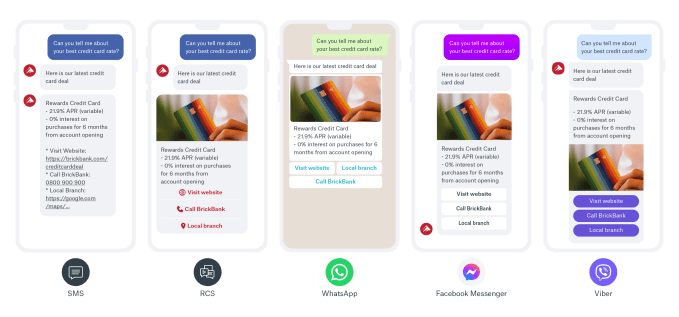As communicating with customers across the world grows ever more challenging due to multiple channels, tools and networking providers, companies are looking for a way to simplify it all. Sinch, a company that makes communications APIs, announced a new tool this morning called the Conversation API designed to make it easier to interact with customers across the planet using multiple messaging products.
Sinch chief product officer Vikram Khandpur says that business is being conducted in different messaging channels such as SMS, WhatsApp or Viber depending on location, and businesses have to be able to communicate with their customers wherever they happen to be from a technology and geographic standpoint. What’s more, this need has become even more pronounced during a pandemic when online communication has become paramount.
Khandpur says that up until now, Sinch has concentrated on optimizing the SMS experience for actions like customer acquisition, customer engagement, delivery notifications and customer support. Now the company wants to take that next step into richer omni-channel messaging.
The idea is to provide a set of tools to help marketing teams communicate across these multiple channels by walking them through the processes required by each player. “By writing to our API, what we can provide is that we can get our customers on all these platforms if they are not already on these platforms,” he said.
He uses WhatsApp as an example because it has a very defined process for brands to work with it. “On WhatsApp, there is this concept of creating these pre-approved templates, and they need to be reviewed, curated and finally approved by the WhatsApp team. We help them with that process, and then do the same with other channels and platforms, so we take that complexity away from the brand,” Khandpur explained.
He adds, “By giving us that message once, we take care of all of [the different tools] behind the scenes transcoding when needed. So if you give us a very rich message with images and videos, WhatsApp may want to render it in a certain way, but then Viber renders that in a different way, and we take care of that.

Examples of transcoding across messaging channels. Image Credits: Sinch
Marketers can use the Conversation API to define parameters like using WhatsApp first in India, but if the targeted customer doesn’t open WhatsApp, then fall back to SMS.
The company has made four acquisitions in the last year including ACL Mobile in India and SAP’s Interconnect Messaging business to enhance its presence across the world.
Sinch, which competes with Twilio in the communications API space, may be one of the most successful companies you never heard of, generating over $500 million in revenue last year while processing over 110 billion messages.
The company launched in Sweden in 2008 and has never taken a dime of venture capital, yet has been profitable since early days. In fact, it’s publicly traded on the NASDAQ Exchange in Stockholm and will be reporting earnings next week.
Comments
Post a Comment